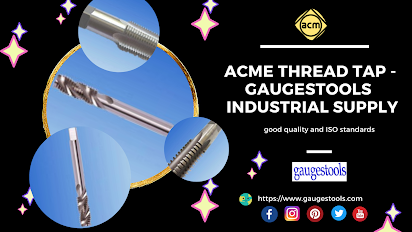Guide to Metric Thread Gauges will help you Master Precision
In the intricate world of manufacturing and engineering, precision is paramount. The accuracy of components and the seamless assembly of parts often hinge on the mastery of metric thread gauges. In this comprehensive guide, we delve into the intricacies of metric thread gauges, exploring their importance, types, and the critical role they play in ensuring the perfection of threaded components.
Understanding Metric Thread Gauges
What are Metric Thread Gauges?
Metric thread gauges are precision tools used to measure and verify the accuracy of threaded components. They come in various types, including ring gauges for external threads and plug gauges for internal threads. These tools adhere to specific international standards, ensuring uniformity and compatibility across diverse industries.
Importance of Metric Thread Gauges
Precision in threaded components is non-negotiable. Metric thread gauges serve as the litmus test for the conformity of threads, ensuring that they meet stringent quality standards. Whether in the automotive, aerospace, or manufacturing industries, the reliability of threaded connections depends on the meticulous use of these gauges.
Types of Metric Thread Gauges
1. Plug Gauges
Plug gauges are instrumental in checking the internal threads of nuts or holes. They come in Go and No-Go varieties, allowing for a quick and efficient assessment of thread conformity. The Go gauge should fit smoothly into the thread, while the No-Go gauge should not.
2. Ring Gauges
Ring gauges assess the external threads of bolts or shafts. Like plug gauges, they also come in Go and No-Go versions. The ring gauge should fit effortlessly over the thread, while the No-Go gauge should not.
3. Taper Thread Gauges
Taper thread gauges are designed for tapered threads. They ensure that the taper matches the specified angle and that the thread is uniform throughout the length.
How to Use Metric Thread Gauges
Using metric thread gauges requires precision and care. Here's a step-by-step guide:
1. Select the Appropriate Gauge:
Choose between plug and ring gauges based on whether you're measuring internal or external threads.
2. Clean the Threaded Component:
Ensure that the threads are free from debris or damage that could affect the gauge's accuracy.
3. Insert the Gauge:
For plug gauges, insert the gauge into the threaded hole or over the bolt. It should fit smoothly. Repeat the process with the No-Go gauge.
4. Check for Conformity:
A smooth fit with the Go gauge and a non-fit with the No-Go gauge indicate that the threads meet the specified standards.
Metric Thread Gauges in Industry
In industries where precision is synonymous with success, metric thread gauges play a pivotal role. From automotive manufacturing to aerospace engineering, the reliability of threaded connections is directly proportional to the accuracy of these gauges. They ensure that every bolt, nut, or threaded component fits seamlessly, contributing to the overall quality and safety of the final product.
The Evolution of Metric Thread Gauges
Over the years, metric thread gauges have evolved to meet the demands of modern manufacturing. Advanced materials, precision engineering, and adherence to international standards have elevated these tools to indispensable assets in any production environment.
.jpg)



Comments
Post a Comment